8 transportation projects to help Thu Duc city develop
Metro No. 1, Ring 2, 3, Thu Thiem 2 bridge, Mien Dong bus station and projects to expand roads, intersections … help Thu Duc city quickly develop.
The Standing Committee of the National Assembly on December 9 approved the establishment of Thu Duc City under Ho Chi Minh City, on the basis of merging districts 2, 9, Thu Duc, a total area of more than 211 km2 and about one million people. The new city is expected to contribute 30% of the GDP of Ho Chi Minh City and 7% of the country’s GDP, is the hub connecting the Southeast region, but the traffic here is considered inadequate, only meeting 30% of the demand. Ho Chi Minh City government is speeding up projects to help Thu Duc city grow rapidly, change the traffic face in the area in the coming years.
1. Metro line 1 (Ben Thanh – Suoi Tien)
With a total investment of 43,700 billion VND, nearly 20 km long, of which more than 13 km runs on Thu Duc city, along the Hanoi highway. The whole line has 14 stations (3 underground stations, 11 overhead stations) now reaching over 78% of the volume, expected to operate by the end of 2021. This is the first metro line of Ho Chi Minh City, a national key project, when put into operation will carry a large number of passengers from Thu Duc City, Binh Duong, Dong Nai to the city center.
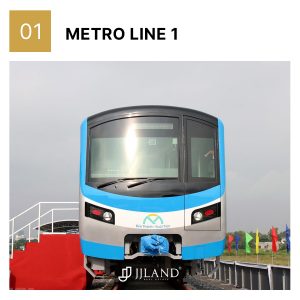
2. Belt Road 2
More than 64 km long, there are 3 sections passing through District 9 and Thu Duc. In which, the section from Pham Van Dong street to Go Dua intersection (Thu Duc district), nearly 3 km long, with a total investment of more than 2,500 billion VND is being deployed. The remaining two sections are 6 km long, including: from Phu Huu Bridge to Hanoi Highway and from Binh Thai intersection via Pham Van Dong street, with a total capital of 14,600 billion VND, expected to be invested by budget. These sections, when finished, help to reduce traffic pressure, increase cargo transport capacity at Truong Tho port (Thu Duc), Long Binh port (District 9), and connect Ho Chi Minh City – Long Thanh – Dau Giay expressway.
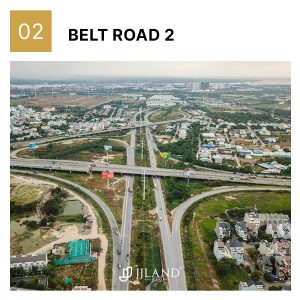
3. Belt Road 3
More than 90 km long, passing through Long An, Ho Chi Minh City, Binh Duong and Dong Nai, divided into 4 sections. In which, Tan Van – Nhon Trach section passing Thu Duc City is nearly 18 km long, with a total capital of more than 9,000 billion dong, expected to start next year. In addition to this section, there is a section longer than 15 km passing through Thu Duc City with a total capital of 6,700 billion VND, which will use Korean loans and Government counterpart funds. These sections, when closed, help the economic and social development not only for Ho Chi Minh City but also for the Southern Key Economic Region.
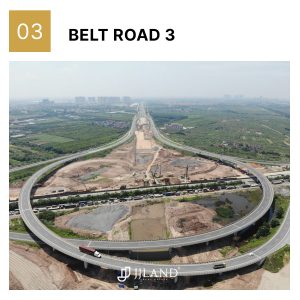
4. Expand The Hanoi Highway
And National Highway 1 is 15.7 km long, 12-16 lanes, with a total capital of more than 4,900 billion VND, about 80% completed. This is the artery axis connecting Thu Duc City with the center of Ho Chi Minh City and Dong Nai, Binh Duong. The route after expanding to increase the capacity of transporting goods through the ports and directly connected with Metro No. 1, the new Mien Dong bus station and the ring routes.
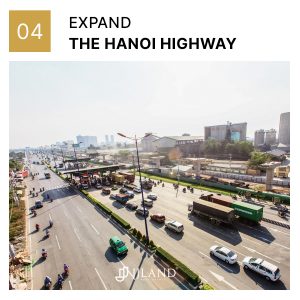
5. My Thuy intersection (District 2)
Started in 2016, the total investment of phase one is nearly 840 billion dong and phase two is more than 1,400 billion dong. Completed works help reduce traffic jams and accidents, increase transport capacity in Cat Lai port area – the nation’s leading port in terms of cargo volume. The intersection also helps increase the connection of districts 2, 7, 9, Ho Chi Minh City – Long Thanh – Dau Giay expressway … Started more than 4 years ago, but the whole project has only reached 45% of the volume due to the lack of space.
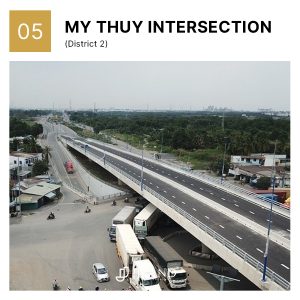
6.An Phu intersection (District 2)
There are 3 floors with double underground tunnel project, proposed to invest in phase one with a total capital of about 1,000 billion VND. The project, when being built with the completion of the Ho Chi Minh City – Long Thanh – Dau Giay expressway expansion, is expected to solve congestion and increase the connection between Ho Chi Minh City and Dong Nai, Ba Ria – Vung Tau and Southeast provinces. Currently the project has not been implemented.

7. Thu Thiem Bridge 2
This is considered to have an important role in Ho Chi Minh City’s traffic when connecting Thu Thiem New Urban Area (District 2) with the city center. The bridge across the Saigon River, 1.4 km long, started in 2015 with a total capital of nearly 3,100 billion VND. Currently, the project is about 70% of the volume, but many items cannot be continued due to the fact that nearly 13,000 m2 of land in District 1 has not been handed over.
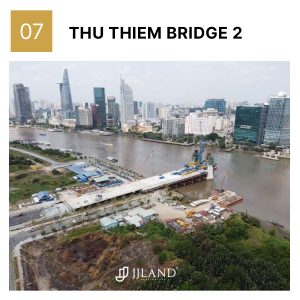
8. New East Bus Station
Exploited on 10/10 with 22 fixed routes from Ho Chi Minh City to Quang Tri back to the Northern provinces. The project started in April 2017 on an area of 16 hectares, investment capital is about 4,000 billion VND, of which phase one is 740 billion VND. This is the largest bus station in the country, can serve more than 7 million passengers per year.

Mr. Phan Cong Bang, Deputy Director of the Department of Transport, said that in addition to the above projects, in Thu Duc City, there are also a number of projects being implemented. Notably, Nguyen Duy Trinh Street through District 2 and 9 currently has three expansion projects divided by segments in the coming years, facilitating vehicles in and out of Phu Huu port, reducing congestion in the area. District 9 has a project to expand La Xuan Oai, Do Xuan Hop, Lien Phuong, Hoang Huu Nam, Le Van Viet and Bung Ong Thoan streets … However, due to difficulties in the site, some projects are behind schedule, unable to deployment.
Recently in the traffic infrastructure development plan of Thu Duc city for the next 10 years, the Department of Transport has identified 5 groups of projects to focus on to form a smart transport system, with a total estimated capital of more than 300,000 billion VND. . Specifically include: smart city program; road infrastructure; metro, rapid bus (BRT), waterway; yards. Particularly, public transport here is targeted to meet between 50% -60% of the travel needs of the people by 2040.
Phuong Dung
Cre: internet